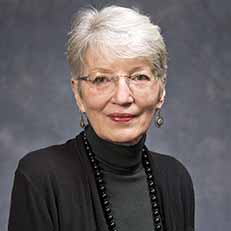BLOOMINGTON, Ind. - Roughly one-quarter of Indiana membership associations reported a decline in the number of members of their organizations over a three-year period according to a new report from Indiana University researchers.
The study, “Indiana Nonprofits: Membership Associations-Overview and Challenges,” uses data from a 2017 survey (the most recent data available) of 1,036 nonprofits conducted by the Indiana Nonprofits Project.
The report examines membership associations and other nonprofits on several dimensions—basic organization factors, financial resources and challenges, human resources and challenges, demand for services and management challenges, and participation in advocacy and advocacy challenges.
About one-third of Indiana nonprofit organizations define themselves as membership associations. The researchers excluded houses of worship or congregations from the analysis—about one-fifth of all Indiana nonprofits.
Almost half (45 percent) of Indiana’s nonprofit membership associations identify as charities serving both the broader community and their own members. Most of the other organizations are distributed fairly evenly among five other categories: civic groups and economic interest groups (each 14 percent), traditional mutual benefit associations (such as the Freemasons or Knights of Columbus) and homeowner/neighborhood associations (each 11 percent), and pleasure/social clubs (7 percent).
Membership associations differ significantly from other nonprofits on several key organizational dimensions: they are older, employ fewer staff, and—as expected—rely more on dues, donations, and events for funding.
“Having fewer staff is not surprising, since most associations usually focus mainly on programming for their own members rather than serving the general public,” says Kirsten Grønbjerg, director of the Indiana Nonprofits Project and Distinguished Professor at Indiana University. “However, a smaller staff is often associated with less organizational capacity, and other findings suggest that membership associations may be facing challenges.”
Compared to other nonprofits, membership associations were more likely to report that demand for their services had declined. They were also less likely to have had a financial surplus than other types of nonprofits, although they were also more likely to have been able to maintain a balance between revenues and expenses.
The new report also examines differences among types of membership association, with particular attention to two underlying groupings: (1) charities and economic associations, and (2) other, more traditional groups, including civic groups, homeowner/neighborhood associations, mutual benefit associations, and pleasure/social groups.
When comparing how the two groupings of membership associations differ on basic organizational dimensions, the report finds that charities/economic interest groups are significantly younger organizations and rely less on dues than other traditional types of membership associations, controlling for all other factors. They are also less likely to participate in advocacy than other traditional membership associations.
“However, we were surprised that the two groupings of membership associations did not differ on other dimensions we examined,” noted Grønbjerg. The findings suggest that declines in the number of members and less demand for services are pervasive across different types of membership associations. “Such trends raise questions about the future robustness of membership associations, and ultimately about their role in promoting civic engagement.”


